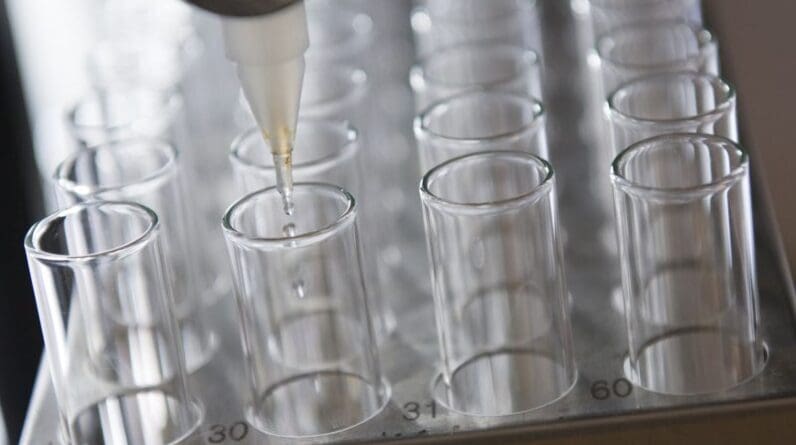
This article was written by the Bloomberg Indices product team.
Amidst the strong revenue gains in the fourth quarter of 2023, Eli Lilly has ascended to the eighth position in the Bloomberg US Large Cap Index’s (B500) market cap ranking, making a strong case for replacing Tesla in the Magnificent 7 club. Novo Nordisk, the drug maker behind Ozempic and Wegovy, emerged as Europe’s largest stock last September, and hit a record high on March 14th.
Explore our index families.
The biotech sector has been experiencing a recovery since hitting a low point in October 2023, after being mostly down for the past three years. Yet investors believe that the rally is still in its early stages, driven by an upturn in deal-making post COVID pandemic, and the prospect of interest rate cuts.
Innovation has been a long-standing culture for the biopharma industry. As big pharma players race to snap up innovative biotechs to fill gaps in their pipelines, licensing is a crucial aspect in the strategy of externalizing pharma innovation. However, for investors, understanding the licensing landscape becomes essential in capturing biopharma opportunities effectively.
To address this need, Bloomberg has introduced the Bloomberg Global Innovative Biopharma Index (BGIBT Index) to track the performance of innovative biotech companies measured by drug licensing activities and large pharmaceutical companies.
Active drug licensing activities is becoming an increasingly evident sign of deeper investment, solid financial health, and a vigorous pipeline for drug development for the licensee. Our factor-based back-testing shows a meaningful relationship between such activities and elevated potential for higher returns in the Biotech sector. Large Pharma, which traditionally leans on its own R&D, doesn’t share this trend.
Capitalizing on this insight, the index methodically selects the top 20 biotech firms worldwide involved in drug-licensing activities, harnessing Bloomberg Intelligence (BI) Drug In-licensing data. This data provides statistics of drug licensing deals, such as average upfront, average deal value with company / drug-level details. The drug-licensing activity is measured by a weighted sum reflecting the stage of their licensing deals from the last two years. A higher score is assigned to licensing deals involving late-stage trials, as these are considered more promising in terms of acquiring drug approvals.
Consider Gilead Sciences, a company at the forefront of HIV research. The company is known not only for its hefty investment in R&D but also for its strategic activity in the drug licensing arena. Poised to release significant trial data later in the year, Gilead has consummated 11 licensing agreements across various trial stages within just two years. Its leading phase score elevated Gilead to the position of the second most prominent biotech stock selected for inclusion in the index. Over the last five years, Gilead’s inclusion has resulted in a positive security selection effect, with the company maintained an average index weight about 4.5%.
Using the Bloomberg PORT attribution analysis, the Bloomberg Global Innovative Biopharma Index (BGIBT Index) has outperformed the overall Health Care sector as represented by the Bloomberg World Health Care Large & Mid Cap Index (WORLDTH Index) by 12.01% over the past five years. This outperformance is mainly attributed to the Selection effect of the Biotech sector (24.62%). The time series analysis also supports the notion that the dominant source of outperformance stems from security selection, even despite negative contribution from Asset allocation.

Recognizing the inherent volatility of the biotech market, the index further selects the 10 largest market cap weighted companies from the Large Pharma sector. This approach aims to reduce the downside volatility of the overall index, while providing investors with a comprehensive exposure to innovative therapies.
Let’s consider a portfolio that excludes Large Pharma stocks from the composition of the BGIBT Index. Over the past five years, the annualized downside risk of this portfolio increased to 16.47%, 2.76% higher than that of the BGIBT Index. This highlights the effectiveness of downside risk mitigation by including Large Pharma sector in the index. As of March 15th, the Large Pharma stocks accounted for 29.47% of the index’s weight but 14.59% of the overall risk.

In a lower interest rate environment with increased access to capital, rate-sensitive biotech companies may have greater flexibility to invest in R&D activities, engage in in-licensing deals, and drive innovation. Bloomberg Intelligence analysts project that the obesity drugs market will reach $80 billion by 2030 as obesity rate increases. Moreover, the impacts of population aging on pharmaceutical innovation are inevitable, further boosting the demand for innovative therapies.
Through semi-annual reconstitution and quarterly rebalance, the Bloomberg Global Innovative Biopharma Index allocates 70% of its weight to Biotech and 30% to Large Pharma, providing dynamic and balanced exposures to the most innovative Biotech companies and industry-leading pharmaceutical giants.
The data and other information included in this publication is for illustrative purposes only, available “as is”, non-binding and constitutes the provision of factual information, rather than financial product advice. BLOOMBERG and BLOOMBERG INDICES (the “Indices”) are trademarks or service marks of Bloomberg Finance L.P. (“BFLP”). BFLP and its affiliates, including BISL, the administrator of the Indices, or their licensors own all proprietary rights in the Indices. Bloomberg L.P. (“BLP”) or one of its subsidiaries provides BFLP, BISL and its subsidiaries with global marketing and operational support and service.







